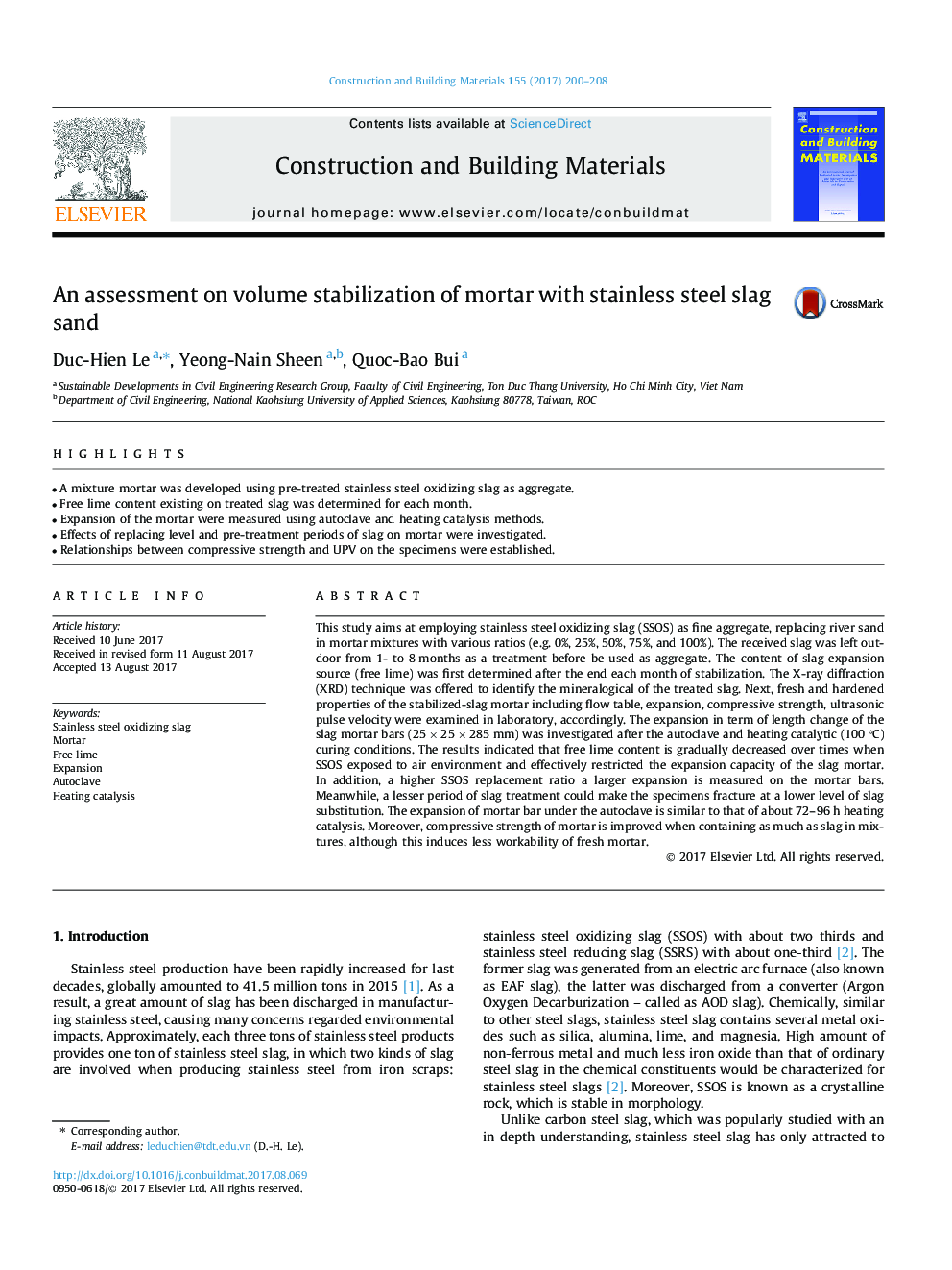| Article ID | Journal | Published Year | Pages | File Type |
|---|---|---|---|---|
| 4918070 | Construction and Building Materials | 2017 | 9 Pages |
Abstract
This study aims at employing stainless steel oxidizing slag (SSOS) as fine aggregate, replacing river sand in mortar mixtures with various ratios (e.g. 0%, 25%, 50%, 75%, and 100%). The received slag was left outdoor from 1- to 8 months as a treatment before be used as aggregate. The content of slag expansion source (free lime) was first determined after the end each month of stabilization. The X-ray diffraction (XRD) technique was offered to identify the mineralogical of the treated slag. Next, fresh and hardened properties of the stabilized-slag mortar including flow table, expansion, compressive strength, ultrasonic pulse velocity were examined in laboratory, accordingly. The expansion in term of length change of the slag mortar bars (25 Ã 25 Ã 285 mm) was investigated after the autoclave and heating catalytic (100 °C) curing conditions. The results indicated that free lime content is gradually decreased over times when SSOS exposed to air environment and effectively restricted the expansion capacity of the slag mortar. In addition, a higher SSOS replacement ratio a larger expansion is measured on the mortar bars. Meanwhile, a lesser period of slag treatment could make the specimens fracture at a lower level of slag substitution. The expansion of mortar bar under the autoclave is similar to that of about 72-96 h heating catalysis. Moreover, compressive strength of mortar is improved when containing as much as slag in mixtures, although this induces less workability of fresh mortar.
Related Topics
Physical Sciences and Engineering
Engineering
Civil and Structural Engineering
Authors
Duc-Hien Le, Yeong-Nain Sheen, Quoc-Bao Bui,
